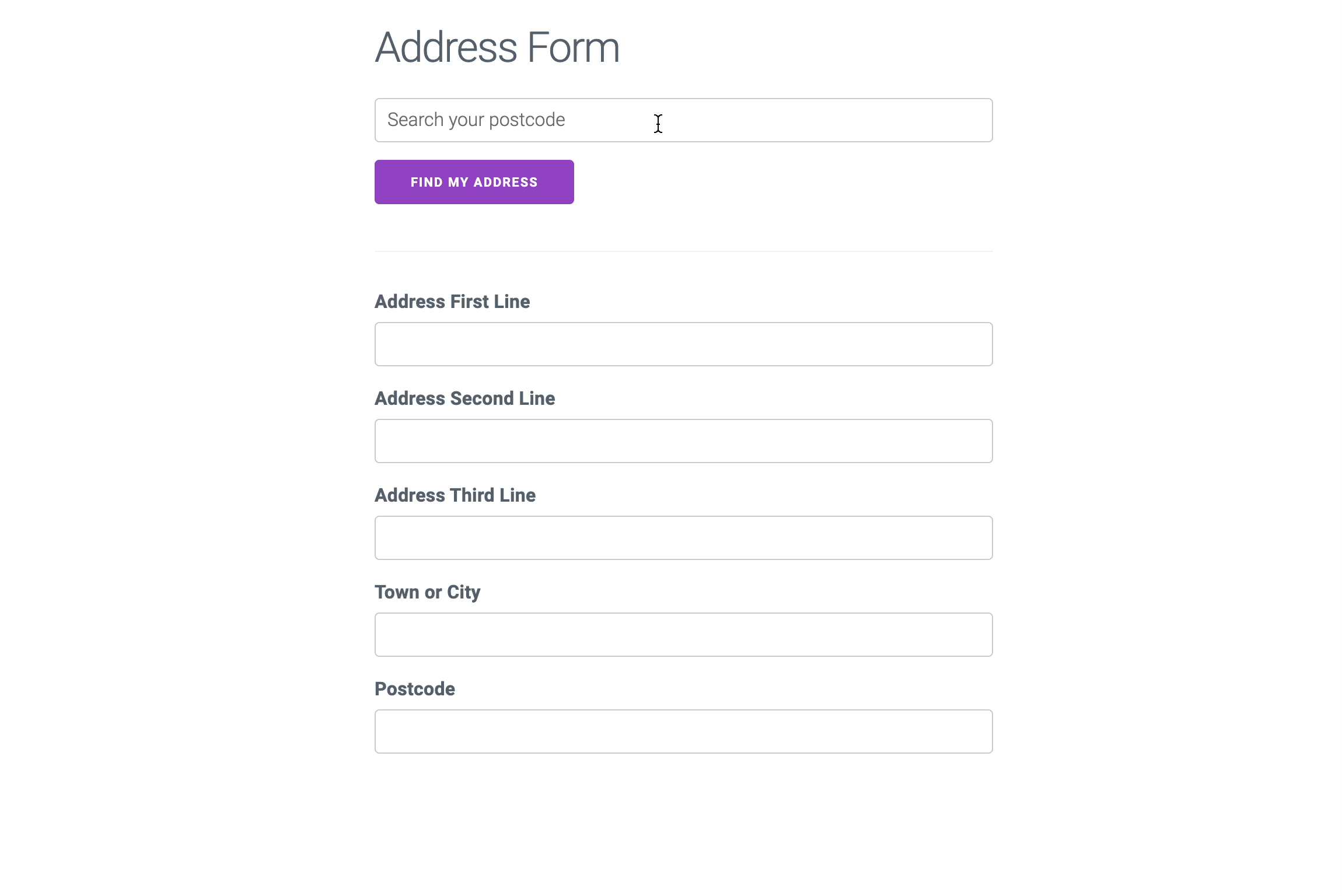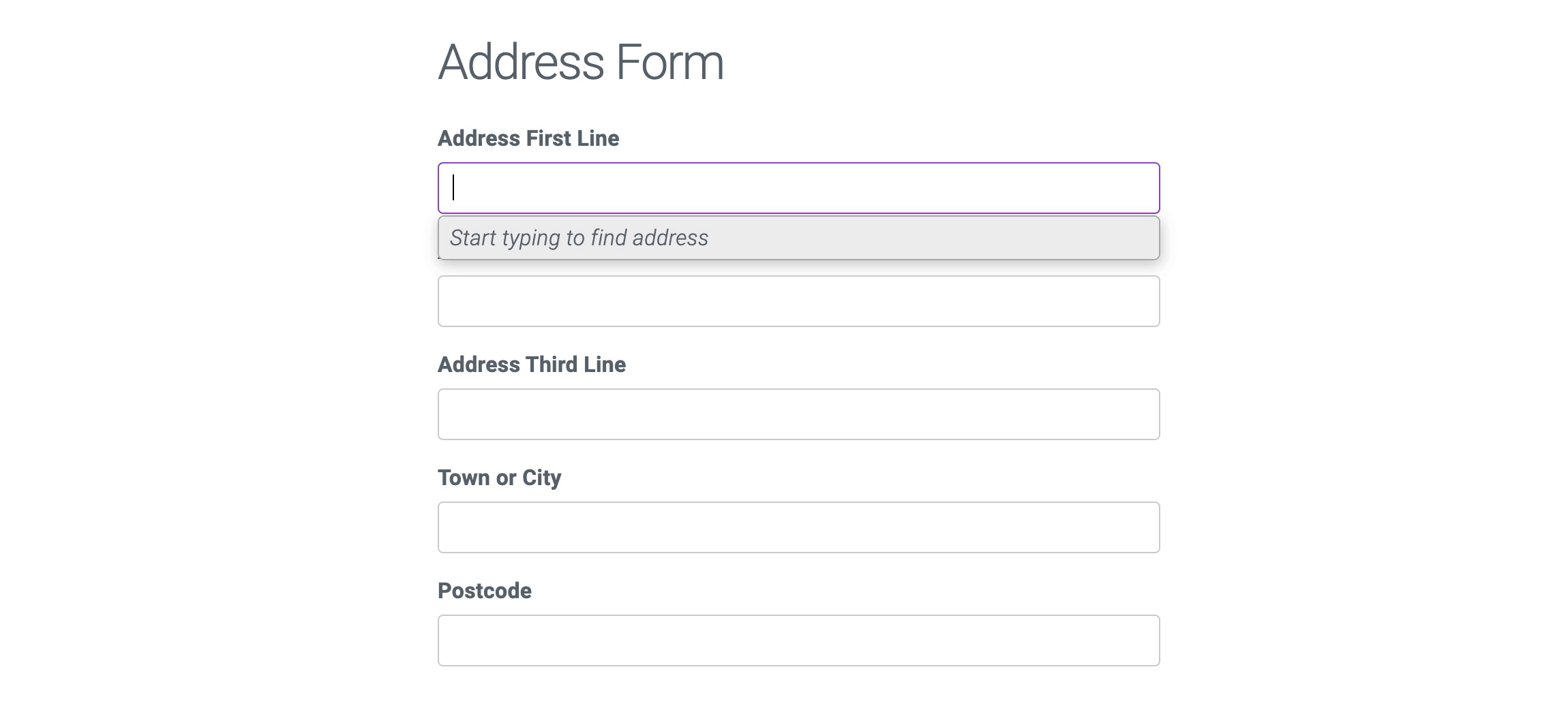Author
Doaa Kurdi
Updated
2021-02-3
Address validation tools allow users to search their addresses on a website or application quickly and efficiently. The information is always accurate and validated using an authoritative dataset like the Postcode Address File. This is the perfect solution to ensure an easy checkout process, service deliverability and overall customer satisfaction.
The two main ways of implementing address validation are Postcode Lookup and Address Finder.
Postcode Lookup
Postcode Lookup is a search functionality that allows the user to enter their postcode, and selects correct address from a dropdown. Once selected, the address fields will be filled in with the completed address.

Address Finder
Address Finder is a smart search where a user starts typing in any part of the address and they are presented with the closes match as they type. The details will autocomplete in real-time.

The user experience and integration may differ depending on where the solution is accessed, i.e on a desktop, mobile, registration or checkout page.
Cart abandonment is unfortunately common in the e-commerce industry, so it is important to optimise the form as best as possible by minimising the input required by the user.
Here are some things to consider when evaluating which solution will suit your form.
Postcode Lookup
Strengths
Familiarity. Postcodes and postcode lookup are the most familiar method in the UK of inputting an address online.
Fewer Keystrokes. On average searching by postcode requires fewer keystrokes than autocompleting an address.
Uses Native Form Components. Every component of a postcode search uses a native form element like an input field or select dropdown. These are well supported across all devices.
Compact. Address autocomplete boxes can take up a large chunk of screen real estate, especially for mobile devices. Postcode lookup just relies on an input field, a button and a select menu which is well integrated into mobile browsers for accessibility and ease of use.
Weaknesses
Unknown Postcodes. It's not possible to find an address if you don't know a postcode.
Harder to Integrate. Unlike an Address Finder, which can just be attached to an input field, Postcode Lookup requires several form elements to be created in order to work. This may be harder to achieve on forms where the owner has less control about how it can be modified.
Recommendation
On customer facing websites and apps, we recommend using Postcode Lookup as it is familiar to most users, creating a seamless user experience.
Mobile
Using Postcode Lookup on mobiles is user friendly. However, it is very important to ensure that the form is clear and readable. Since the user has to scroll down a list of addresses after entering the postcode, this can be time consuming on a mobile screen.
The key requirements are:
- Large fields to make it easy to tap where you want to type
- Large CTA buttons so it’s easy to continue
- The form works if you swap to landscape orientation
- It’s clear which fields are required and which are optional
Address Finder & Autocompletion
Strengths
Unknown Addresses or Postcodes. Address Finders are ideal if you don't know the postcode and may not be entirely sure how the address is spelt. Smart matching capabilities can be implemented with address autocomplete to ensure errors are caught and corrected. This can pick up typos, abbreviations, forgotten or extra character and more.
Read our Address Autocomplete guide for more information on matching capabilities.
Keyboard Only. Forms with Address Finders can be navigated using the keyboard only. The tab and arrow keys are sufficient to select an address and continue populating a form.
Postcode Lookup can be replicated. Good address finders will present a complete address list for a postcode if a correct postcode is entered.
Easier to Integrate. Address Finders can be bound dynamically to any input field and create address selection boxes on the fly. This means that no custom HTML needs to be injected on a page. Consequently, integrations should be relatively quicker to implement.
Address Finder is known for its speed. Address options improve as the user types and the closest matching addresses appear on top of the list.
Weaknesses
Less Familiar. Address Finder can feel less familiar for less technologically savvy users.
Harder to Use. In situations with limited screen space, like mobile devices, Address Finder boxes can be harder to manipulate than the native UI elements provided by Postcode Lookup.
Recommendation
Address Finders are the better option in scenarios where:
- Users are in working environments such as CRMs or call centres
- The application or website is not presented in constrained screen space
Address Finders can be particularly powerful in backroom operations like a call centre, because the operator has the option of entering a postcode or fuzzy matching an address. Furthermore, fingers never need to leave the keyboard to complete an address.
The Address Finder box is less desirable in scenarios where there is less screen space, such as mobile devices. The rest of the form may be obscured and can potentially make the page harder to operate.
Selling in multiple countries? Choose Address Finder. It provides real-time autocomplete and validation across international formats and languages, and you can restrict suggestions to specific markets as needed. See global country coverage.
Still unsure? Watch The Battle of Postcode Lookup vs Address Finder to learn more about their features.
